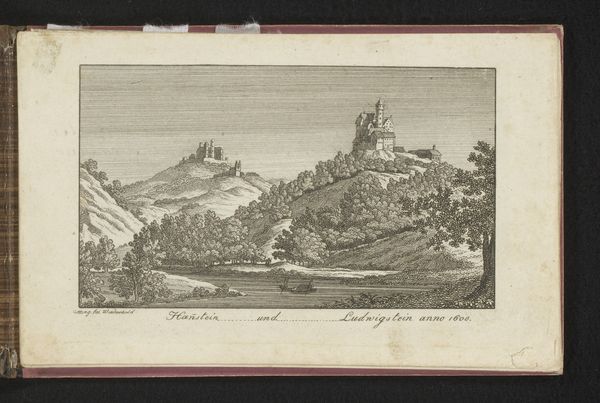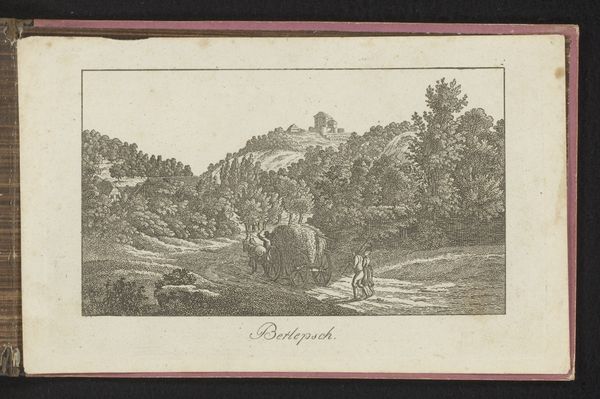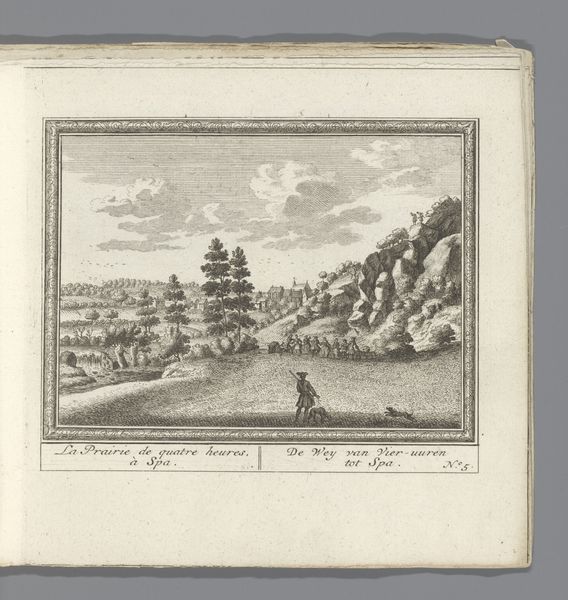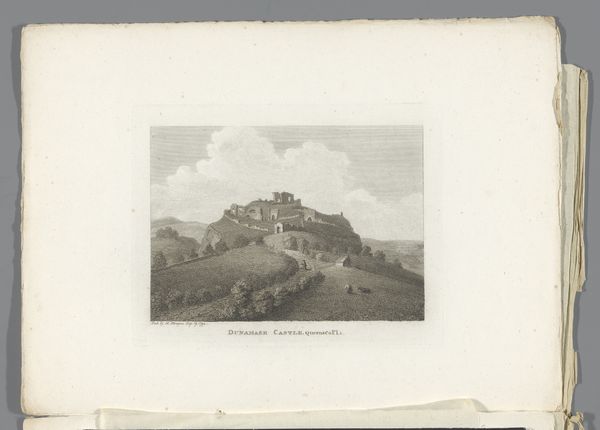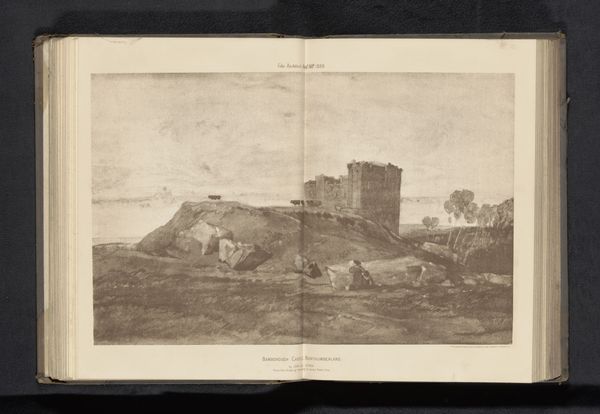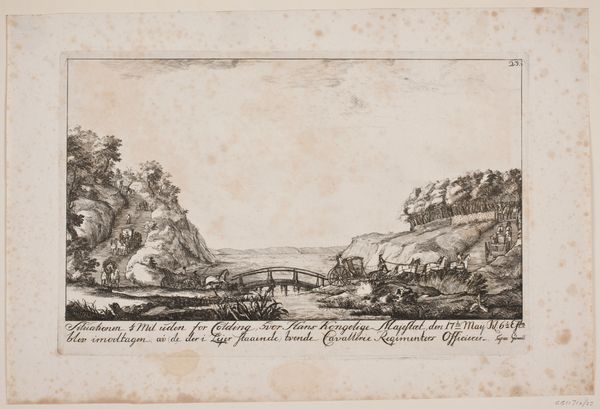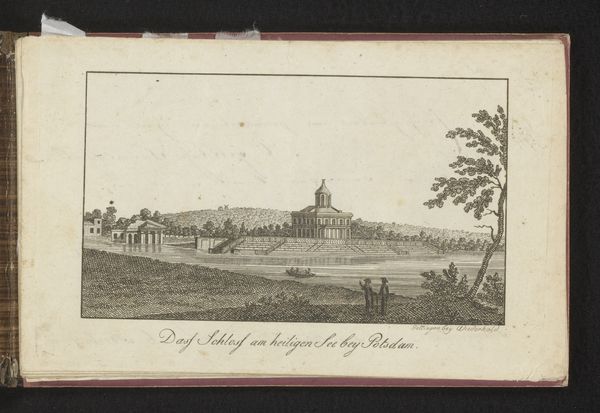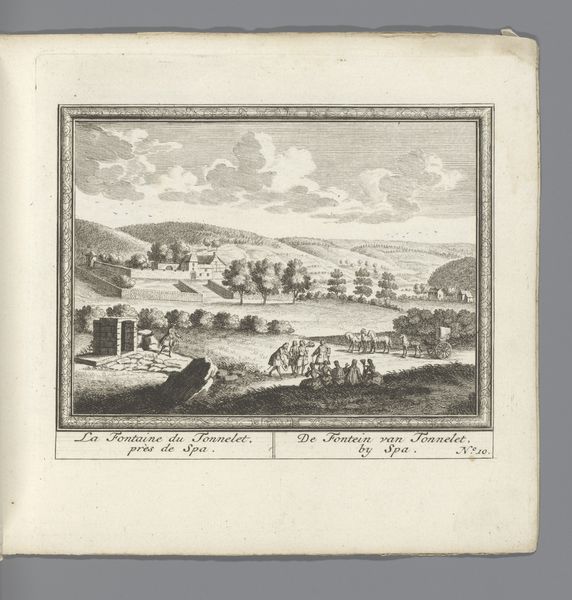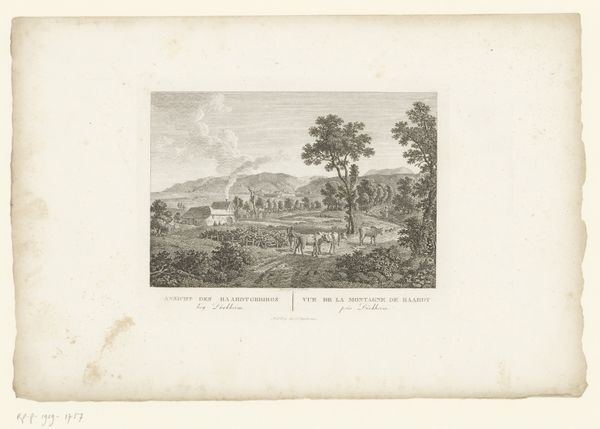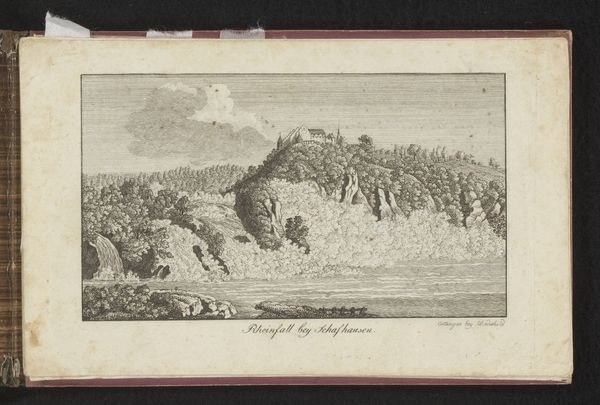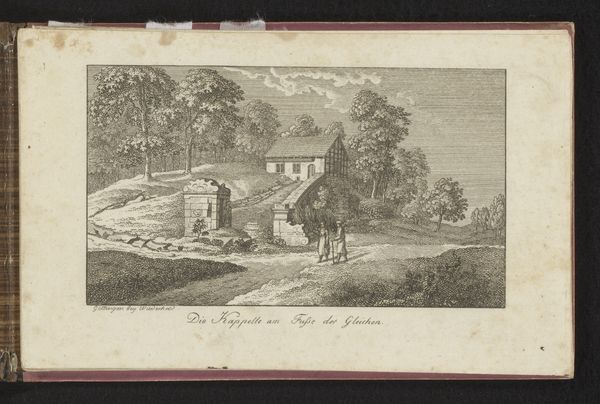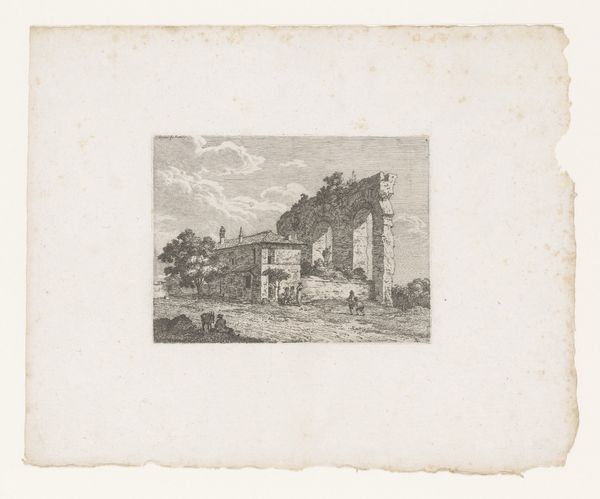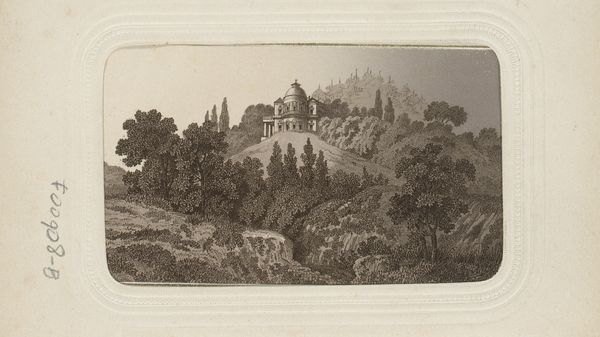
drawing, paper, ink
#
drawing
#
neoclacissism
#
landscape
#
paper
#
ink
#
coloured pencil
#
romanticism
Dimensions: height 105 mm, width 171 mm
Copyright: Rijks Museum: Open Domain
Curator: Gazing at this delicate landscape drawing, I am immediately drawn into its subtle gradations of light and shadow, a world rendered in ink on paper. There’s a palpable sense of quietude. Editor: It's a wonderful piece from an anonymous artist, simply titled "Gezicht op een heuveltop" or "View of a Hilltop," created sometime between 1770 and 1816. What I find intriguing is the historical moment it represents, poised between Neoclassicism and Romanticism. It mirrors the political and social shifts underway at the time. Curator: Indeed, the solitary hilltop structure almost looks like a beacon. Is that a tower next to it, promising surveillance, vigilance? Perhaps reflecting an emerging consciousness of control? Or maybe protection? I am fascinated by the lone figures; who might they be? What does their presence contribute to this depiction of landscape? Editor: The artist is interested in how individuals negotiate their position in a rapidly changing world. These could be early tourists! Remember, this period saw a rise in "picturesque" travel and a desire to experience nature, which the market responded to; travel became an industry, essentially. The inclusion of this architectural structure atop the peak signifies an emerging society beginning to impose its structures upon what had always been considered nature's realm. Curator: I can see that push-and-pull represented here. Note how the artist used the barest hint of colored pencil to wash in pale tones, but mostly the meticulous cross-hatching creates incredible tonal depth. Do you feel like the hilltop scene exudes hope? Editor: The visual vocabulary suggests a measured optimism. Remember that such images were widely reproduced, reaching varied social classes, and shaping perceptions of nationhood, of progress. Perhaps what feels optimistic is this notion of accessibility of new ideals. Curator: Absolutely. This hilltop vista seems to invite exploration, both physically and metaphorically. I perceive now that a key to appreciating this piece, and era, lies in how social spaces and expectations change what humans represent in artistic productions. Editor: Precisely, and it provides us a potent reminder to constantly question whose perspectives truly shape the narrative around "progress". Thank you, Iconographer. Curator: My pleasure, Historian.
Comments
No comments
Be the first to comment and join the conversation on the ultimate creative platform.
